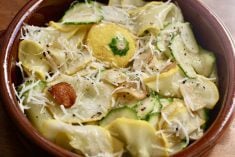Dear TEAM: I have noticed quite a few have written in about the poem/song Come Little Leaves. Enclosed is the song the way I learned it from a book we have called Country School Melodies. – D.G., Morris, Man.
Thanks so much D.G. for sending the music to Come Little Leaves. Unfortunately we are unable to reproduce it because of copyright laws. However I was able to find a reference to the song in the following books:
- Bruderhof Communities. Sing Through the Seasons: 99 Songs for Children, Rifton, New York, Plough Publishing House, 1972.
Read Also

Farm auctions evolve with the times
Times have changed. The number of live, on-farm auctions is seeing a drastic decline in recent years. Today’s younger farmers may actually never experience going to one.
- Robbins Mammoth Collection of American Songs (Mammoth Series No. 11) by Hugo Frey, Robbins Music, 1941.
If you happen to have these songbooks, you can compare the tunes. Hopefully one of these sources will have the song as you learned it in school and wonderful memories can be recalled.
Sunflower, pumpkin seeds
Dear TEAM: How do you roast sunflowers for eating? – S.M., Elrose, Sask.
Dear S.M.: The following recipe could be used for sunflower or pumpkin seeds. When making jack-o’-lanterns for Halloween, save the seeds and roast for a tasty snack. Also, the big sunflower faces in our gardens are ready for people or birds to enjoy.
Method: Soak seeds overnight in 1 tablespoon (15 mL) salt per 11Ú3 cups (325 mL) water.
Place on a baking sheet. Roast in 300 F (150 C) oven for 15 to 20 minutes or until sunflower seeds are dry and slightly crisp and pumpkin seeds a golden brown.
A special rice
M.B. of Biggar, Sask. found arborio rice listed in the ingredients for making risotto. She asks what it is.
Arborio rice is an imported Italian rice sold in specialty stores and in some supermarkets. It is a high starch, short grained white rice, traditionally used for risottos. When cooked it is creamy with a firm heart, perfect for the texture of risottos. Other short-grain rices can be substituted, however, the package I purchased said it was essential for this classic northern Italian specialty.
I’ve included a basic recipe for risotto, a tasty dish. Other recipes may have a variety of ingredients added, such as cooked meats, sautŽed mushrooms, parmesan cheese, spinach, peppers, tomatoes or peas. It is prepared differently from other rice dishes, with a lot of stirring.
Risotto
1 cup uncooked 250 mL
arborio rice
1 tablespoon cooking oil 15 mL
1 tablespoon butter 15 mL
1Ú2 cup chopped onion 125 mL
3 cups chicken 750 mL
broth
salt and pepper to taste
In a large saucepan, sautŽ onion in oil and butter for three minutes. Do not brown.
Add rice, stirring for about three minutes. Stir in one cup (250 mL) of broth. Continue cooking over medium heat, stirring until liquid is absorbed. Gradually stir in remaining broth one cup (250 mL) at a time, cooking and stirring until liquid is absorbed before adding the next cup.
Approximate total cooking time is 30 to 35 minutes. Serve immediately. Source: Package of President’s Choice Italian Arborio Rice.
Candied ginger
Dear TEAM: We enjoy The Western Producer and have used a lot of the recipes and ideas. We would appreciate a recipe for making candied ginger, as we eat it as a candy and also cook with it. – M. and R.J., Sylvan Lake, Alta.
Dear M. and R.J.: In Margo Oliver’s Weekend Magazine Cookbook, published by Totem Books, I found a recipe for candied orange peel. Substituting ginger root for orange peel produced a product much like store-bought crystallized ginger.
Candied ginger root or orange peel
1 large ginger root 1
or 4 oranges
cold water
21Ú2 cups sugar 625 mL
Ginger: Peel the ginger root. Slice the root into approximately 1Ú3 inch (one cm) slices. Put in a small saucepan and cover with water. Simmer until tender, about 10 minutes. Drain, reserving one cup (250 mL) of the liquid.
Orange peel: Remove peel from oranges in quarters. Simmer 10 minutes. Drain, reserving one cup (250 mL) of the liquid. Remove the inner white portion of the peel and discard. Cut the peel into 1Ú4 inch (2Ú3 cm) strips.
Method: Combine the reserved one cup (250 mL) of liquid with two cups (500 mL) sugar. Stir over low heat until the sugar dissolves, then cook without stirring to 238 F (114 C) or until a soft ball forms in water. Add ginger or orange and simmer 10 minutes. Set on a cake rack to drain well. Place about 1Ú2 cup (125 mL) of sugar in a small paper bag. Add the ginger or orange. Shake well to coat. Cool.
Old poem
Lili Bit of Manitoba requested the words to the following poem. Her mother had learned it in school and had, prior to her passing, written out the first verse by memory.
Thanks to M.N. of Weyburn, Sask. for sending it to us.
Good Night and Good Morning
A fair little girl sat under a tree,
Sewing as long as her eyes could see;
Then smoothed her work and folded it right,
And said, “Dear work, good night, good night.”
Such a number of rooks came over her head,
Crying “Caw, caw,” on their way to bed.
She said as she watched their curious flight,
“Little black things, good night, good night.”
The horses neighed and the oxen lowed,
The sheep’s “bleat, bleat” came over the road;
All seeming to say with a quiet delight,
“Good little girl, good night, good night.”
She did not say to the sun, “Good night.”
Though she saw him there like a ball of light,
For she knew He had God’s time to keep
All over the world and never could sleep.
The tall pink foxglove bowed his head;
The violets curtsied and went to bed;
And good little Lucy tied up her hair,
And said, on her knees, her favorite prayer.
And while on her pillow she softly lay,
She knew nothing more till again it was day;
And all things said to the beautiful sun,
“Good morning, good morning, our work is begun.”
– By Lord Houghton
From The Beacon Second Reader, 1914, published by Ginn and Co.














